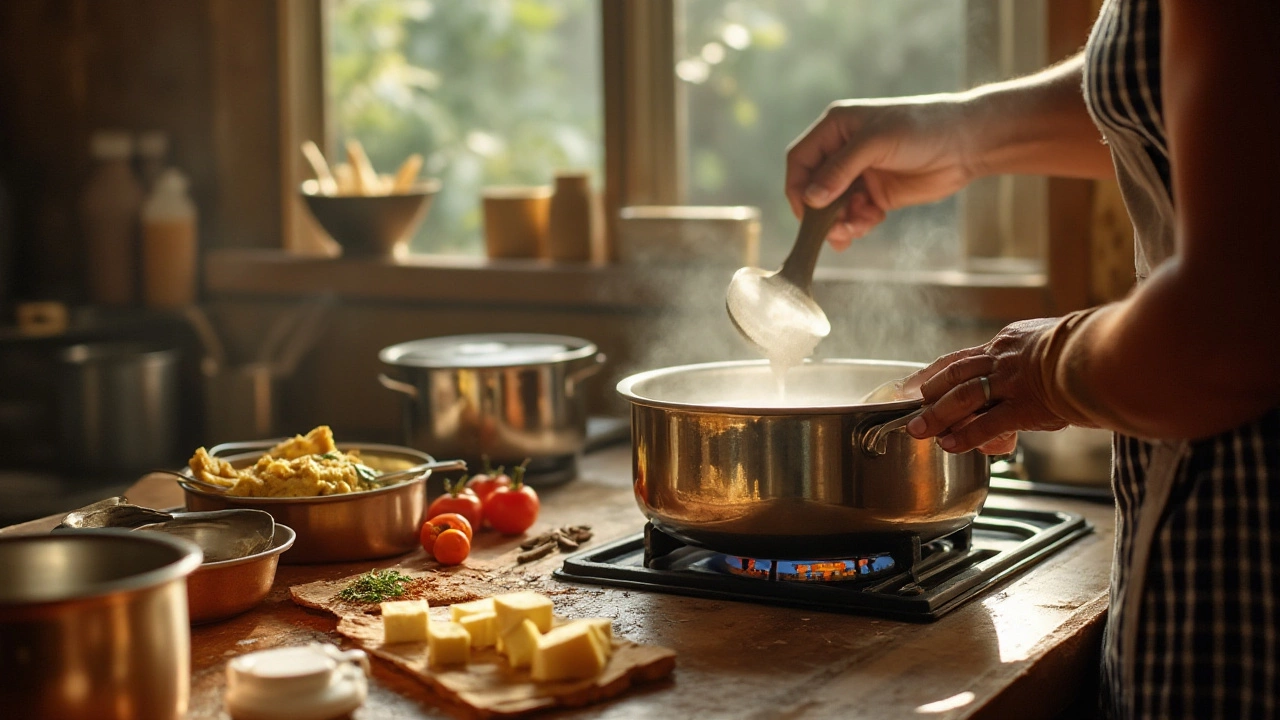Making Paneer: Your Complete Guide to Homemade Indian Cheese
When working with making paneer, the process of turning milk into a soft, crumbly cheese that’s a staple in Indian cooking. Also known as home‑made paneer, it relies on simple chemistry and a few kitchen tools, making it perfect for anyone who wants fresh cheese without a factory.
One of the first decisions you’ll face is the type of milk, the base ingredient that provides protein, fat, and the natural sweetness for paneer. Whole cow’s milk gives the richest texture, while buffalo milk yields a firmer bite because of higher fat content. If you’re looking for a lighter version, low‑fat milk works, but expect a softer curd that might break easily.
To turn milk into paneer you need an acid, a food‑safe substance that curdles the proteins in heated milk. Lemon juice is the most common choice; its citric acid drops the pH fast, separating curds from whey. Vinegar works too, but it leaves a faint tang. The key is adding the acid gradually while stirring, so the curds form uniformly and you get a smooth, grain‑free paneer.
Many people compare paneer with tofu, a soy‑based cheese that’s popular in East Asian cuisine. While both are soft cheeses, paneer has a milder dairy flavor and a firmer bite when pressed, whereas tofu is more porous and absorbs sauces readily. Knowing the difference helps you choose the right ingredient for dishes like butter chicken, palak paneer, or a veggie stir‑fry.
Key Steps and Tips for Perfect Paneer
The first step is heating the milk to a gentle boil – around 90‑95 °C – without stirring too much. This ensures the milk proteins denature evenly, a crucial attribute for a clean curd. Once you see a thin film on top, lower the heat and add your chosen acid slowly. You’ll see the milk split into curds and clear whey within minutes.
After curdling, let the mixture sit for a couple of minutes so the curds fully separate. Then line a colander with cheesecloth and pour the curd‑whey mix through it. Gather the cloth’s corners and press gently to remove excess whey. For a firmer paneer, wrap the bundle in the cloth, place a heavy plate on top, and let it sit for 30‑45 minutes. This pressure expels more whey and firms up the texture.
When you’re ready to use the paneer, cut it into cubes or strips. If you like a golden crust, shallow‑fry the pieces in a little oil or ghee for 2‑3 minutes per side. The heat creates a slight caramelization while keeping the inside soft. Remember, pre‑cooked paneer can be stored in the fridge for up to 3 days, sealed in water to maintain moisture.
For variations, try adding herbs or spices to the milk before curdling – a pinch of cumin, crushed garlic, or fresh cilantro can infuse subtle flavor into the cheese. Some cooks also blend a bit of yogurt into the milk for extra tang, but this may change the texture, making it softer and more crumbly.
Cleaning up is straightforward: the whey left behind is rich in lactose and can be used in soups, doughs, or even as a base for smoothies. Don’t waste it – it adds a mild sweetness and helps yeast ferment better.
If you’re curious about the science, paneer formation is a classic case of protein coagulation. When milk heats, casein micelles destabilize, and the acid reduces the pH, causing them to aggregate into curds. Understanding this helps you troubleshoot – too much acid makes the curds gritty; too little leaves them loose.
Whether you’re a beginner or a seasoned cook, mastering making paneer opens up a world of dishes from creamy curries to grilled kebabs. Below you’ll find a curated list of articles that dive deeper into paneer’s role in Indian cuisine, compare it with tofu, explore milk choices, and share handy troubleshooting tips.

Is Making Paneer at Home Worth the Effort?
Curious about crafting your own paneer at home? This article explores whether homemade paneer is worth your time and effort. Discover the health benefits, taste differences, and cost-effectiveness of making paneer from scratch. You'll also find simple tips and tricks for perfecting your homemade cheese-making process. Let's delve into the appealing world of fresh paneer and why it might just become a staple in your kitchen.